If you’re a Florida homeowner considering an upgrade to your outdoor space, you’ve likely encountered the terms lanai and screen room. While both options offer a way to enjoy the outdoors without the annoyance of insects or direct sun exposure, they differ in structure, cost, and design. Understanding these differences is key to choosing the right solution for your home. In this article, we’ll break down the features, benefits, and comparisons between these two popular outdoor additions.
A lanai is more than a patio—it’s a lifestyle space designed for seamless indoor-outdoor living in warm climates like Florida.
What is a Lanai?
A lanai is a popular architectural feature in Florida homes, serving as a covered outdoor area that blends indoor comfort with outdoor freedom. Unlike a basic patio, a lanai enclosure typically includes a roof and may be enclosed with walls, screens, or windows. This space is ideal for relaxing, dining, or entertaining guests year-round. Many Florida homes feature a screened lanai to protect against bugs and harsh sunlight.
When asking what is a lanai in Florida, the answer usually includes a screened area connected to the back or side of a house, often adjacent to the living room or kitchen. Some lanais are fully enclosed, becoming an enclosed lanai that offers weather protection while maintaining an airy atmosphere.
Did you know? The term “lanai” comes from Hawaii and originally referred to any open-sided, roofed veranda.
Design Features of a Lanai
- Permanent roof integrated into the home’s structure
- Optional lanai screen panels or sliding windows
- Direct access to interior rooms
- Can include fans, lighting, or outdoor kitchens

For more information on enclosing your lanai, check out our guide on how much it costs to enclose a lanai.
What is a Screen Room?
A screen room is a versatile outdoor structure typically constructed with a frame and mesh panels to create an insect-free zone. Unlike a lanai, a screen room may not be connected to the main house and usually doesn’t include a solid roof. Instead, it features a lightweight covering that shields the space from sun and rain. These enclosures are ideal for patios, decks, or standalone setups and are often chosen for their affordability and flexibility.
When comparing lanai vs screened porch, one of the biggest differences lies in the level of integration. A lanai often feels like an extension of the home, while a screen room is more of an addition or upgrade to an existing outdoor area. Screen lanai enclosures may also be used for pools or gardens.
A screen room provides a quick, budget-friendly way to enjoy the outdoors—without the bugs.
Key Features of Screen Rooms
- Lightweight aluminum or PVC frame
- Durable mesh walls for airflow and insect control
- Simple construction with faster installation
- Perfect for seasonal use or rental properties
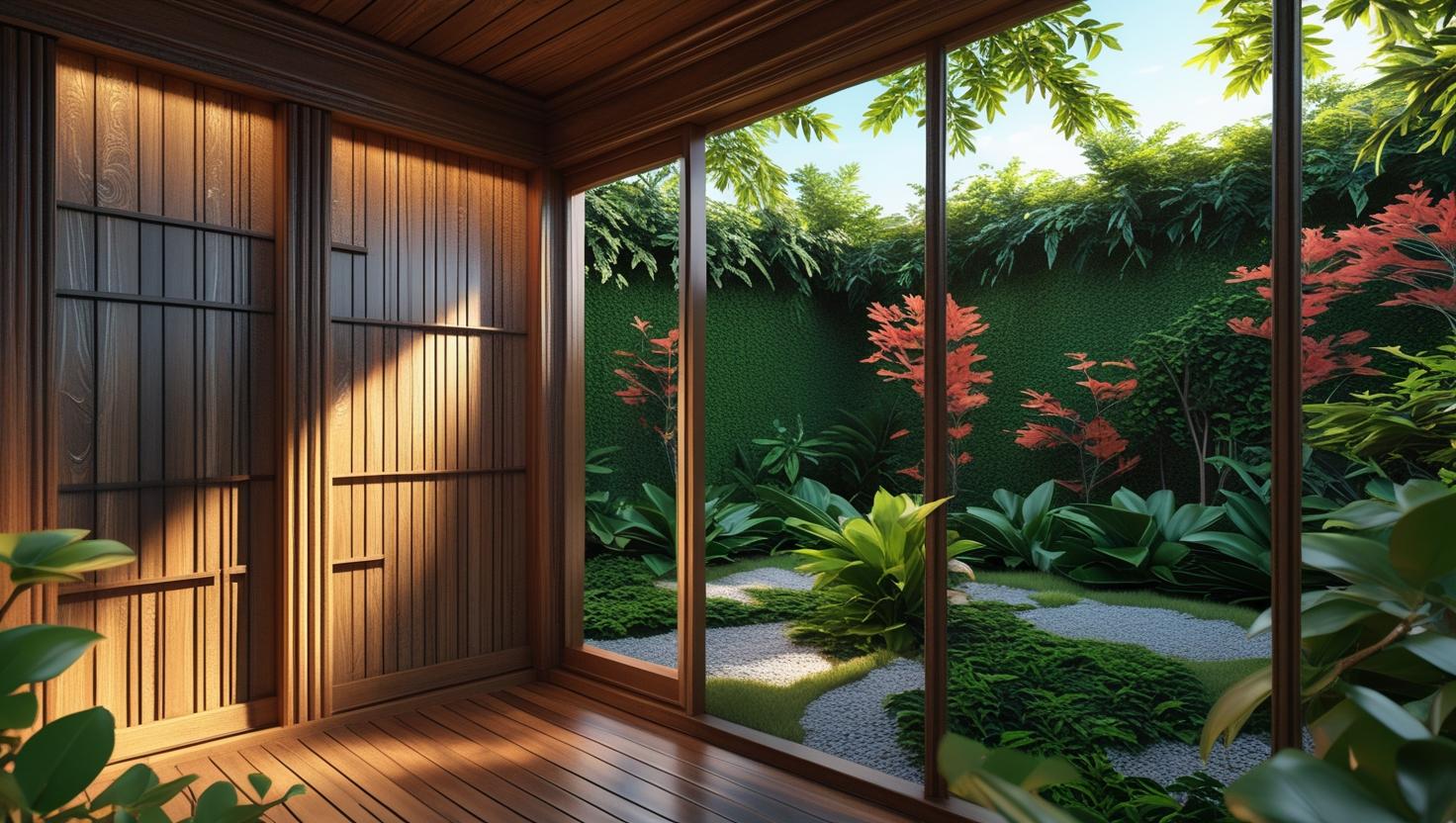
Looking for screen room ideas? Explore our guide to different screen enclosure types and their costs.
Lanai vs Screen Room: Key Differences
When deciding between a lanai screen enclosure and a screen room, it’s essential to consider structural integration, durability, and aesthetics. A lanai is generally a permanent, architecturally integrated extension of your home, whereas a screen room is often added later as a functional improvement to an existing outdoor area.
Below is a detailed comparison that breaks down the difference between patio and lanai, as well as how a lanai compares to a porch or sunroom.
| Feature | Lanai | Screen Room |
|---|---|---|
| Connection to home | Typically integrated into the home’s structure | Usually a separate structure or add-on |
| Roof type | Permanent, matches home design | Lightweight and often sloped or flat |
| Walls & panels | Can include glass, acrylic, or screen panels | Primarily mesh screens |
| Usage | Year-round relaxation, entertaining | Seasonal or warm-weather lounging |
| Cost | Higher due to structural complexity | Lower initial investment |
Both options offer their own benefits, but your final decision may depend on space, budget, and desired comfort. If you’re unsure, explore our Lanai Enclosures page to see tailored solutions for your home.
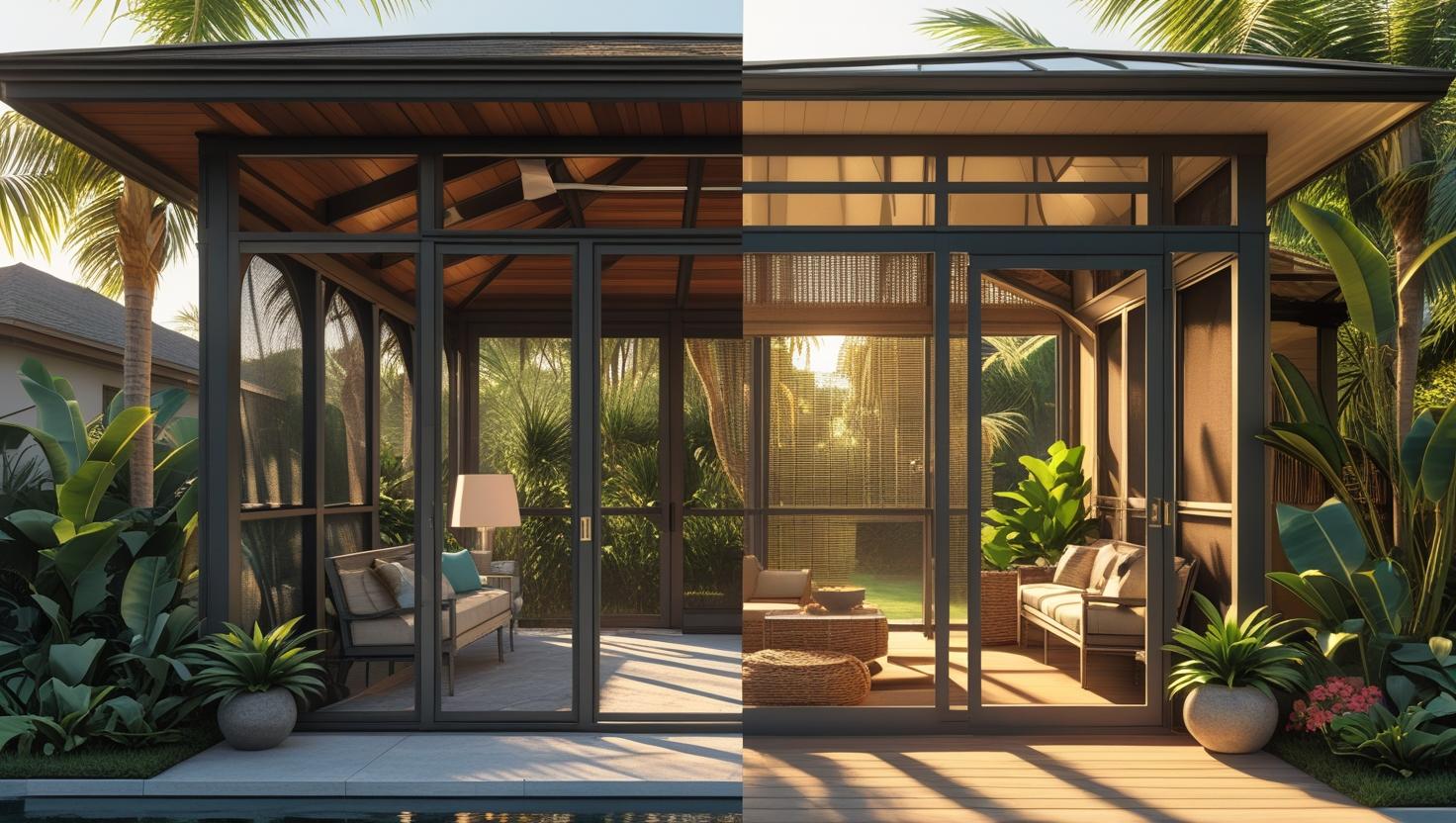
Customization and Materials
Whether you’re building a lanai or a screen room, customization is key to matching your home’s architecture and your lifestyle. A lanai structure typically allows for more durable and permanent materials such as concrete flooring, insulated roofing, and lanai screen covers that blend with your home’s aesthetic. On the other hand, screen rooms use lighter materials like aluminum frames and mesh screening, which are easier to install and more cost-effective.
One popular option among Florida homeowners is to upgrade their lanai with acrylic windows for weather protection and extended use throughout the year. You can explore more about this solution in our guide on Acrylic Windows.
Popular Customization Options
- Tile, concrete, or stone flooring
- Built-in lighting and ceiling fans
- Outdoor kitchens or wet bars
- Lanai privacy screen installations for seclusion
- Fully screened lanai or partial glass enclosure
A properly designed lanai adds resale value, especially in Florida’s hot real estate market.
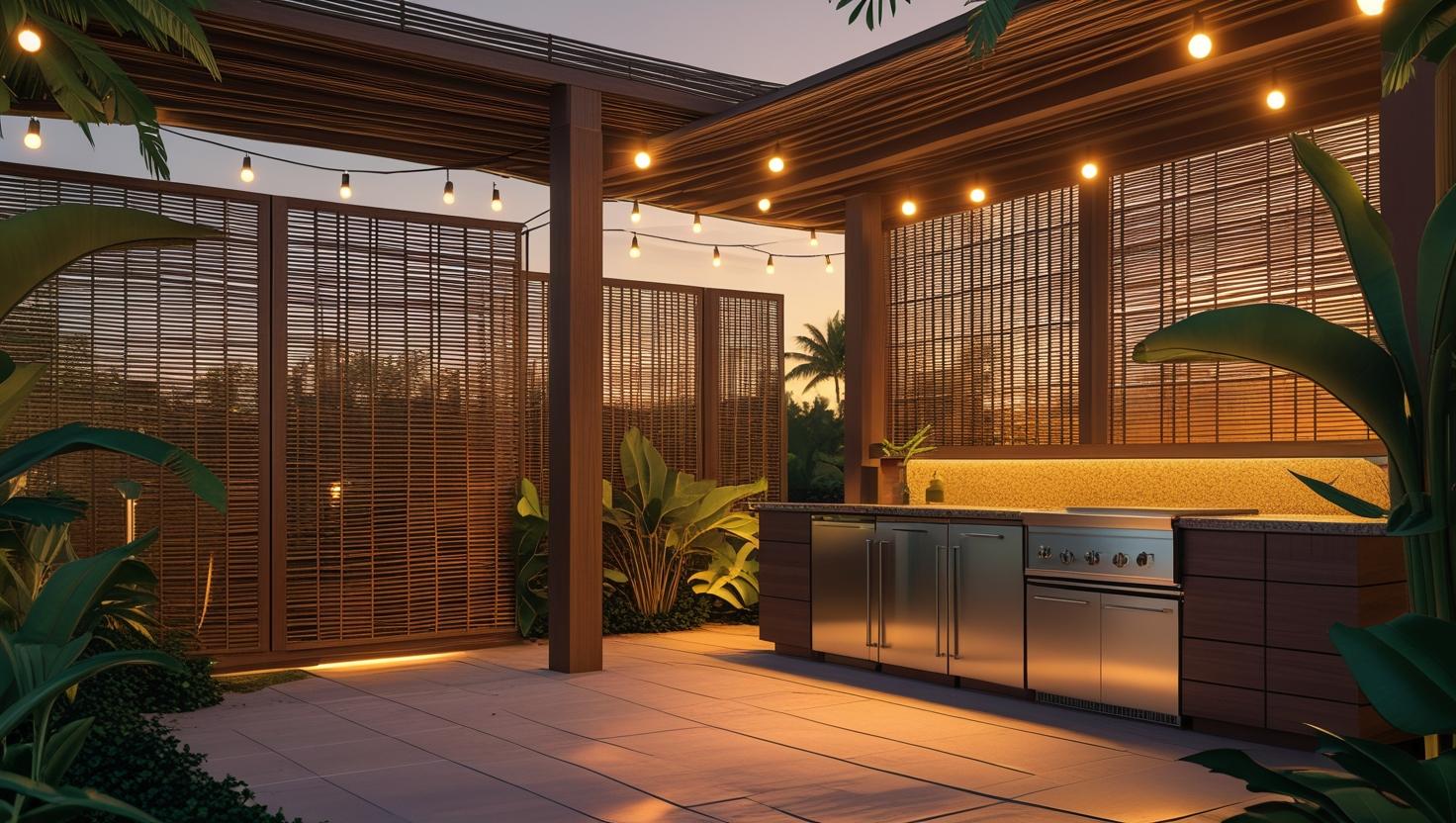
For more examples of the materials and enclosures available, check out our page on Types of Screen Enclosures and Their Costs.
Functionality and Climate Benefits
One of the main advantages of adding a lanai or screen room is enhanced functionality for Florida’s unique climate. A screen in lanai offers shelter from insects, UV exposure, and rain while still allowing air to circulate freely. This makes it a perfect space for morning coffee, reading, or even working remotely in comfort.
In contrast, a screen room provides similar benefits but may be slightly more exposed to the elements depending on the materials used. Homeowners often ask what is the difference between a porch and a lanai, and the answer largely lies in the level of protection and integration with the home.
Why Floridians Prefer Lanais
- Greater storm resistance due to solid construction
- Year-round usability and insulation from extreme heat
- Can accommodate heavier furnishings and amenities
- Offers more privacy with lanai screen covers
According to Florida building trends, enclosed lanais are among the most requested upgrades for new homeowners in coastal areas.
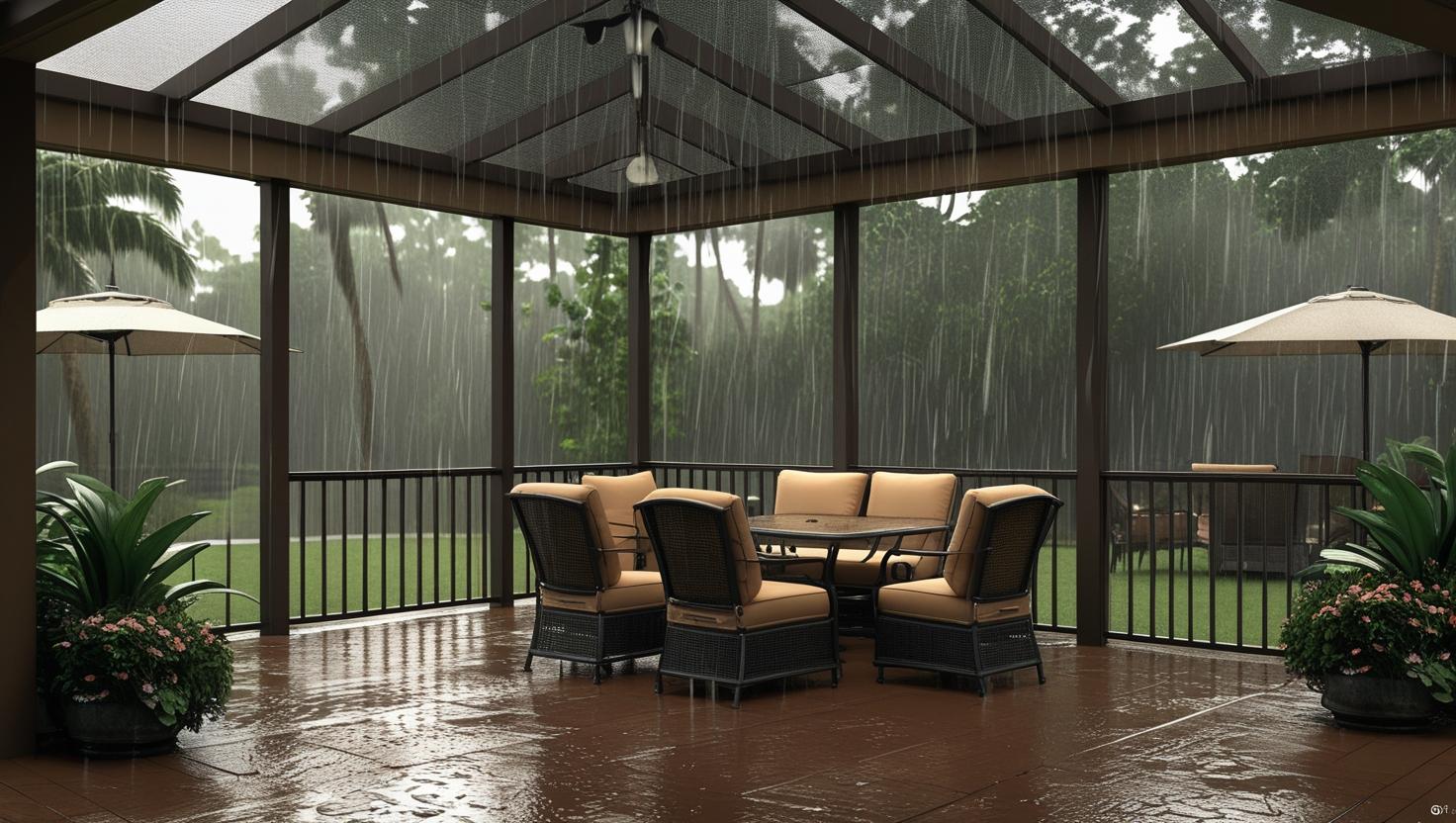
Want to learn more about covered outdoor structures in Florida? Explore our guide: Know About Carports in Florida.
Lanai vs Screen Room: Key Differences
When comparing a lanai vs screened porch, the distinctions can significantly impact your decision depending on your home’s structure, budget, and lifestyle. Both provide relaxing outdoor environments, but they differ in permanence, structure, and functionality. Below is a detailed comparison to help you choose what’s best for your home.
| Feature | Lanai | Screen Room |
|---|---|---|
| Structural Integration | Built into home’s foundation and roof | Usually added as an external structure |
| Material Use | Often includes windows, walls, or lanai screen | Uses mesh or lightweight aluminum frames |
| Weather Protection | High – can be fully enclosed | Moderate – screens offer limited protection |
| Aesthetic Appeal | Sleek and modern – blends with home | Functional but less integrated visually |
| Customization Options | High – includes acrylic windows, lighting, flooring | Limited – basic enclosure with minimal add-ons |
Choosing between a lanai and a screen room depends on whether you prioritize architectural integration or simple protection from the elements.
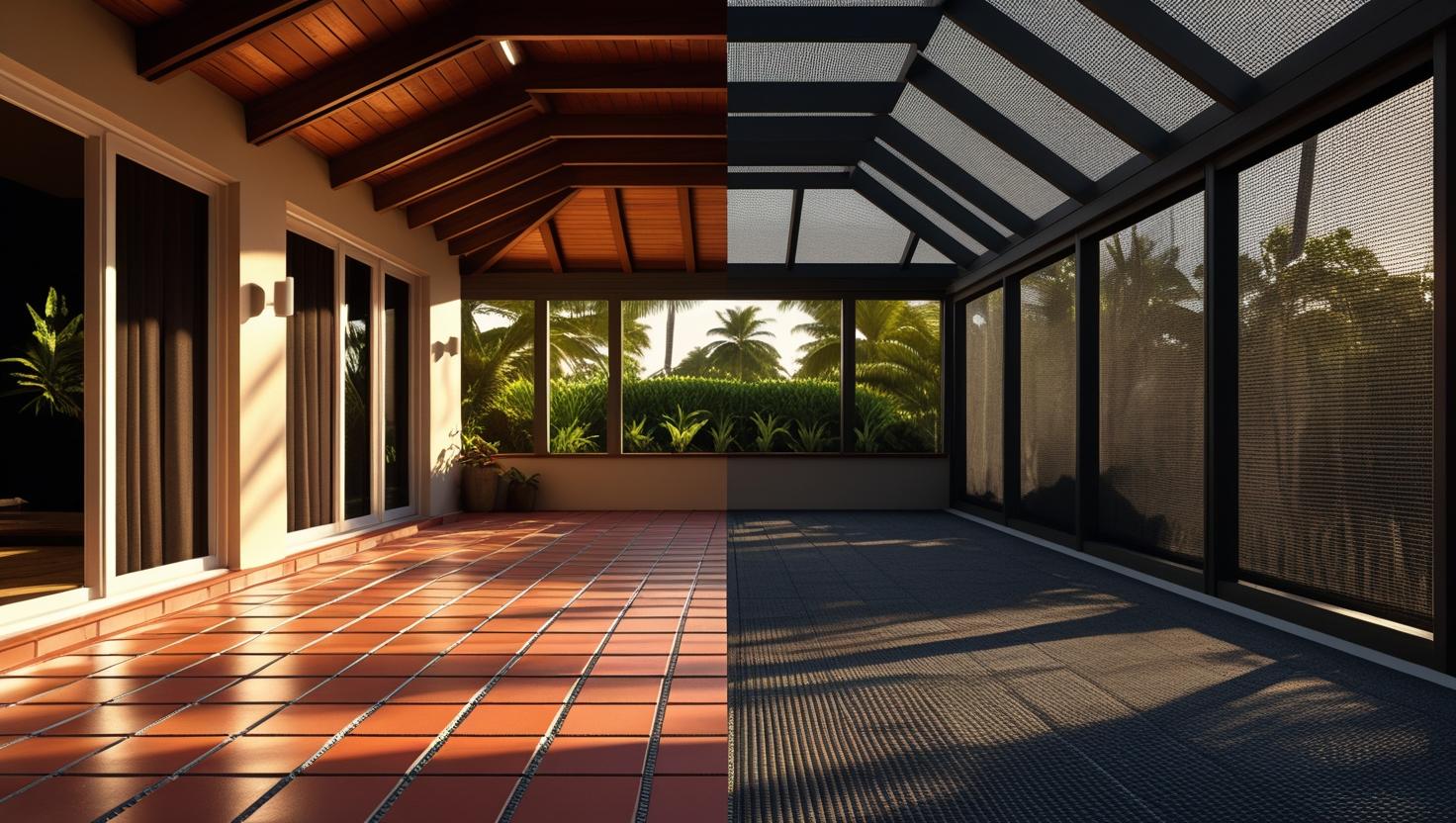
Curious about which enclosure fits your budget? View our pricing breakdown: Types of Screen Enclosures and Their Costs.
Privacy and Design Considerations
Whether you’re leaning toward a screened lanai or a traditional porch, privacy and visual appeal are major factors to consider. Florida homes often feature a lanai privacy screen to create a secluded retreat while still letting light and air pass through. Adding a lanai screen enclosure enhances both aesthetics and protection without compromising openness.
Many homeowners wonder, what does a lanai look like when fully equipped. A modern lanai might include privacy panels, textured flooring, and outdoor furniture that blends seamlessly with the home’s interior. By incorporating lanai screen panels or curtains, you can balance openness with solitude, especially in high-traffic neighborhoods.
Florida lanai designs have evolved to combine style with smart solutions—screen covers now provide shade, ventilation, and privacy all in one.
Design Tips for Maximum Comfort
- Use patterned or tinted lanai screen covers for extra privacy
- Integrate landscaping like hedges or potted plants around the enclosure
- Opt for retractable panels to adapt to changing light and weather
- Incorporate weatherproof decor to maintain aesthetic consistency
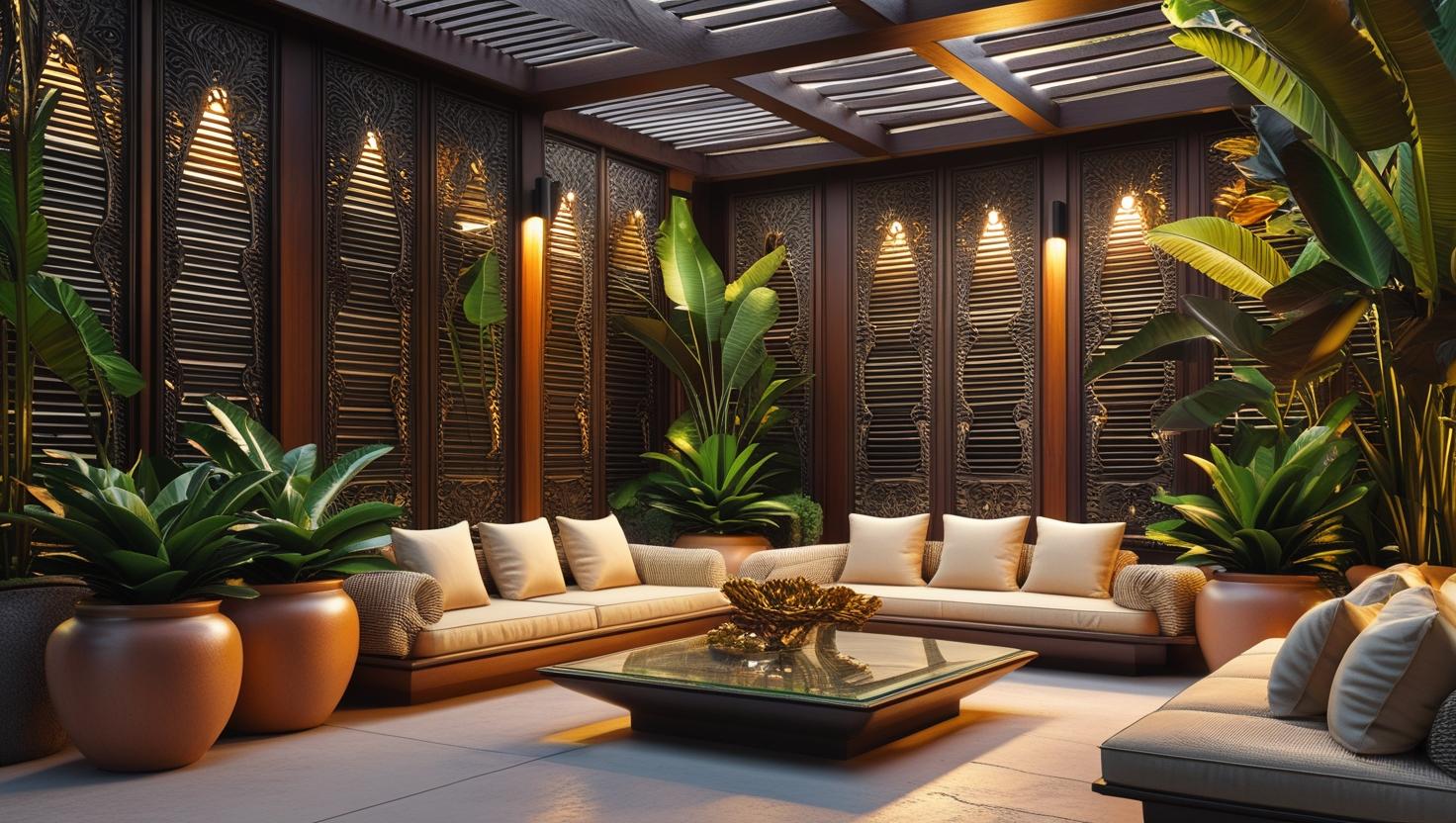
If you’re curious about structural types, visit our page on lanai enclosures to explore your design options.
Functionality and Use Cases
When deciding between a lanai and a screen room, it’s important to consider how you intend to use the space. A lanai typically serves as an extension of your living area, making it ideal for dining, relaxing, or entertaining year-round. On the other hand, a screen room might be more suitable for seasonal use or simpler needs like reading or lounging.
Some homeowners ask, what is an enclosed patio called when it functions as a full living space? The answer often points to an enclosed lanai. These spaces can house outdoor kitchens, TVs, or even hot tubs. A screen lanai enclosure offers flexibility—open to the breeze yet protected from insects and debris.
A lanai is not just a porch; it’s a versatile space that supports both casual living and luxury outdoor experiences in Florida homes.
When to Choose a Lanai or Screen Room
- Choose a lanai for year-round living and structural integration
- Choose a screen room for budget-friendly, seasonal enjoyment
- Use a lanai patio enclosure when you need protection from weather and insects
- Use screen enclosures when you want airflow without structural commitment
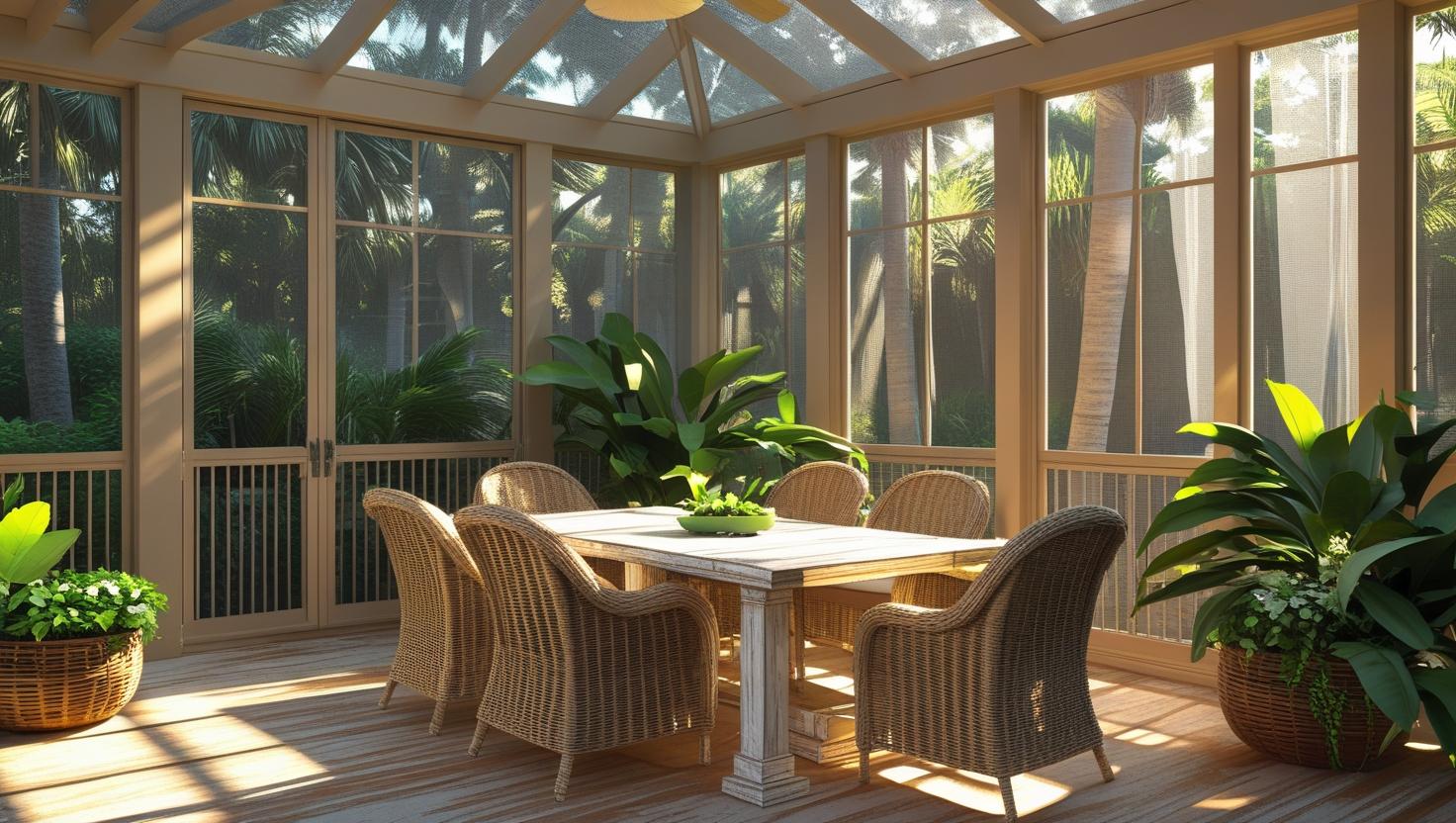
Want to know more about screen types and pricing? See our detailed breakdown at screen enclosure types and costs.
Lanai vs Screen Room: Side-by-Side Comparison
To help you better understand the practical differences, we’ve created a side-by-side comparison of key features between a lanai and a screen room. This will assist you in selecting the right structure for your Florida home.
| Feature | Lanai | Screen Room |
|---|---|---|
| Structure | Attached to home, often integrated with roof | May be attached or freestanding |
| Roofing | Permanent and weather-resistant | Typically lightweight panels or awning |
| Walls | Screen, acrylic windows, or sliding panels | Mesh screen walls only |
| Usage | Year-round living space | Primarily warm-season use |
| Cost | Moderate to high depending on features | Generally more affordable |
Both lanais and screen rooms offer insect protection and outdoor enjoyment, but a lanai adds true value to your living space through comfort and flexibility.
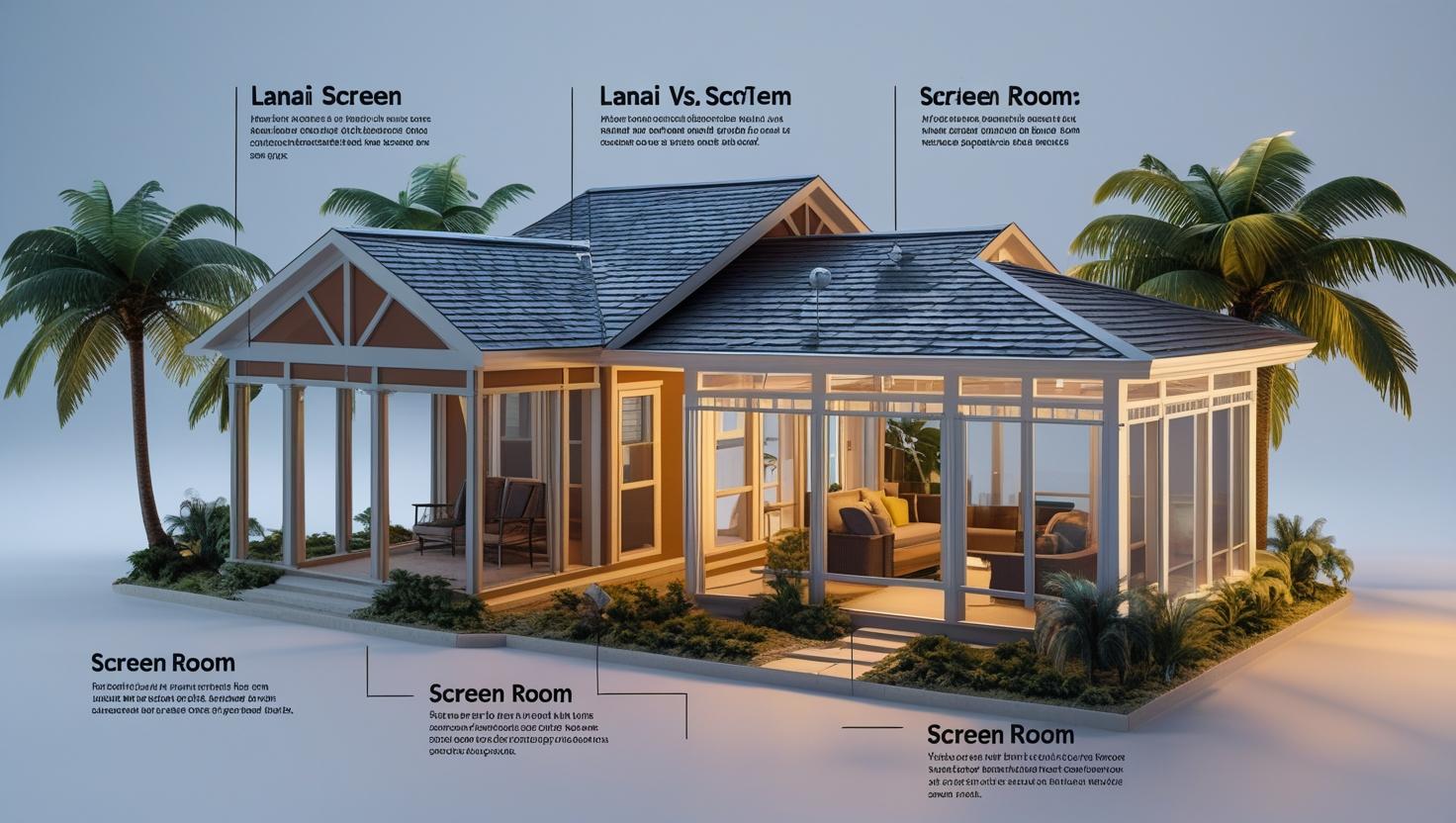
Privacy and Aesthetics
When deciding between a lanai and a screen room, the level of privacy and aesthetic appeal are important factors. A well-designed lanai screen enclosure often blends seamlessly with the home’s architecture, offering a more cohesive and elegant appearance.
For homeowners who prioritize visual harmony, a lanai patio enclosure can include decorative elements like tiled floors, ceiling fans, or even plants and water features, elevating the overall experience. Meanwhile, screen rooms tend to be more utilitarian, focusing primarily on function over form.
In terms of privacy, lanais provide more options for enclosing the space with tinted acrylic panels, curtains, or lanai privacy screens, while screen rooms rely solely on mesh, offering limited seclusion.
Want privacy without sacrificing your view? A lanai with acrylic windows offers the perfect balance between openness and comfort.
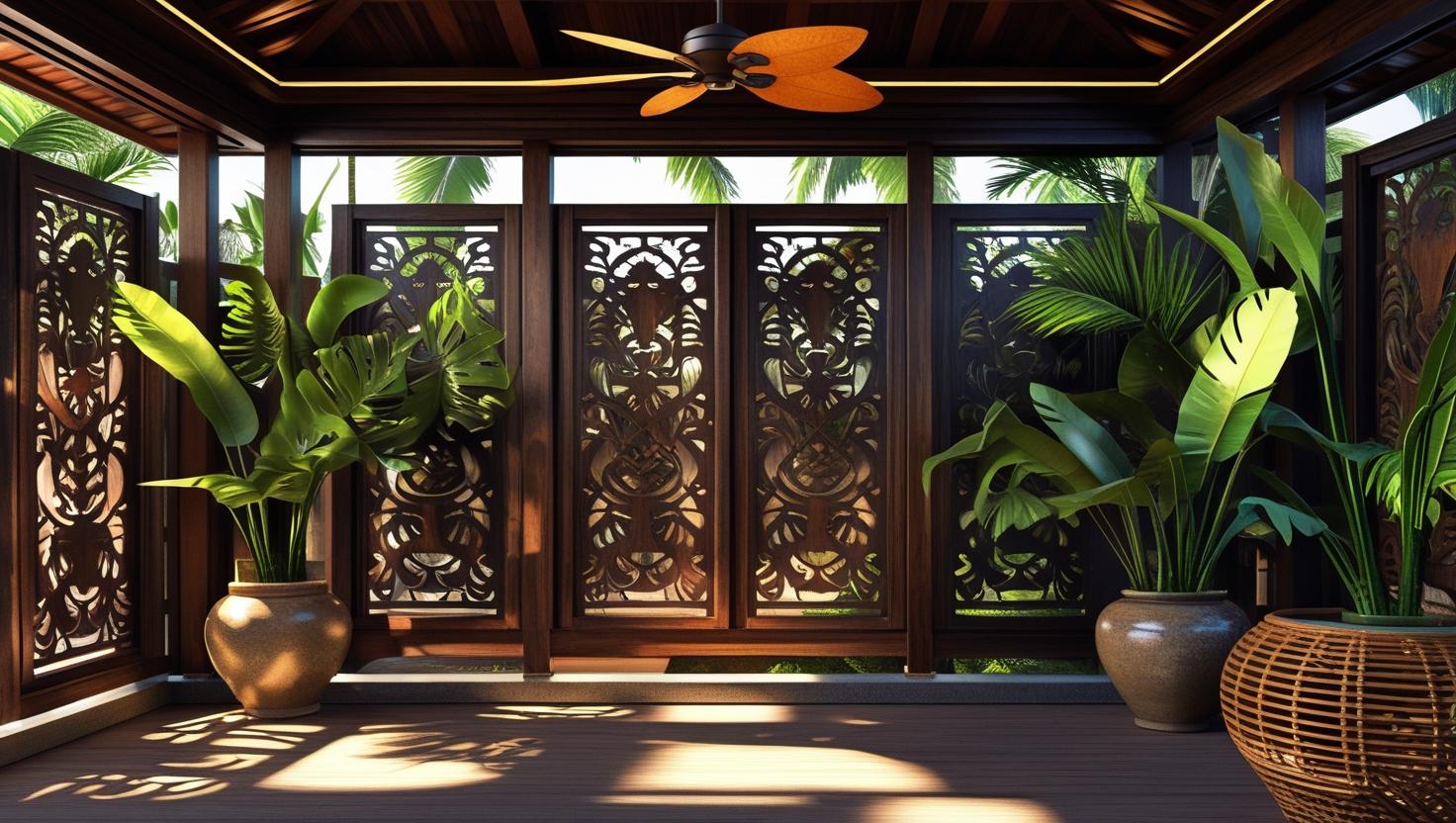
Durability and Weather Resistance
Florida’s climate demands structures that can withstand sun, humidity, wind, and heavy rain. A lanai is typically more robust, especially when built with integrated roofing and reinforced lanai structure systems. This makes it ideal for year-round use and long-term durability.
Screen rooms, although effective at keeping out insects and debris, may not offer the same level of protection. Mesh panels can tear or loosen over time, and basic aluminum frames might struggle under extreme weather conditions. Homeowners often reinforce their screen lanai enclosure to improve performance.
Those planning for longevity should opt for a lanai with proper drainage, sealed surfaces, and weather-resistant screen enclosures. This ensures fewer repairs and a better return on investment.
Lanais can be equipped with storm-rated screens and enclosures to withstand Florida’s hurricane season.
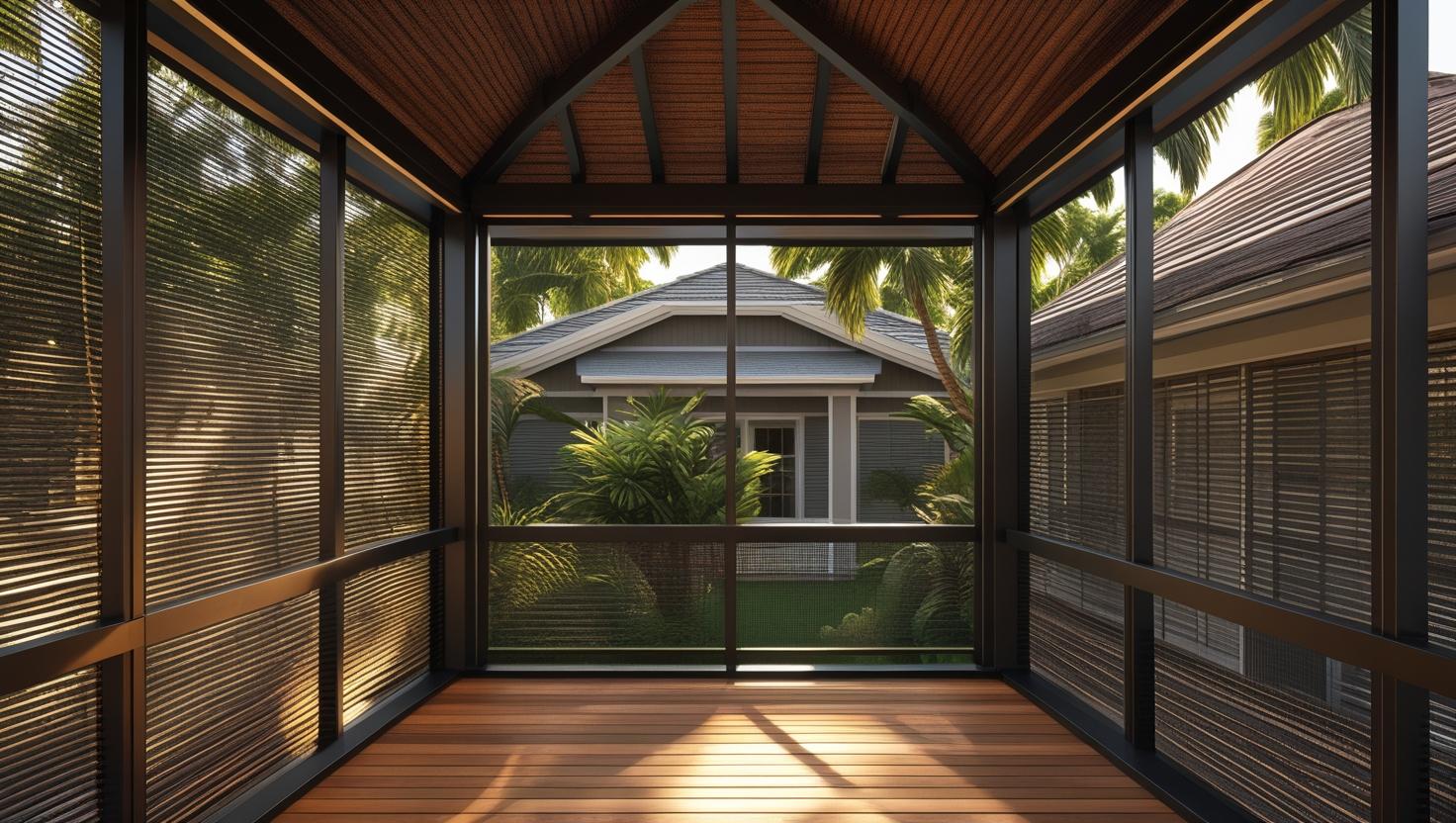
FAQ
What is the difference between a porch and a lanai?
A porch is usually a small covered area at the front of a home, while a lanai is typically larger and located at the back. Lanais in Florida often feature screen enclosures or windows, making them suitable for year-round outdoor living. This makes a lanai more like an outdoor room than a simple entryway.
What does a lanai look like?
A lanai typically looks like a roofed extension of your home with open sides or screens. Many include fans, tile flooring, or outdoor furniture, giving them a cozy and functional appearance. Some lanai structures are enclosed with acrylic windows or panels for added weather resistance.
Is a lanai considered an enclosed patio?
Yes, a lanai can be considered an enclosed patio—especially when screened or fitted with sliding windows. The main distinction is its integration with the home’s structure, offering more stability and design continuity compared to standalone patio enclosures.
Which is better for Florida weather: lanai or screen room?
Both are great options, but a lanai often provides more long-term comfort and protection due to its sturdy construction and roof integration. Screen rooms are easier to install and cost-effective, but may offer less insulation from rain and heat. Choosing between them depends on your lifestyle and property layout.



